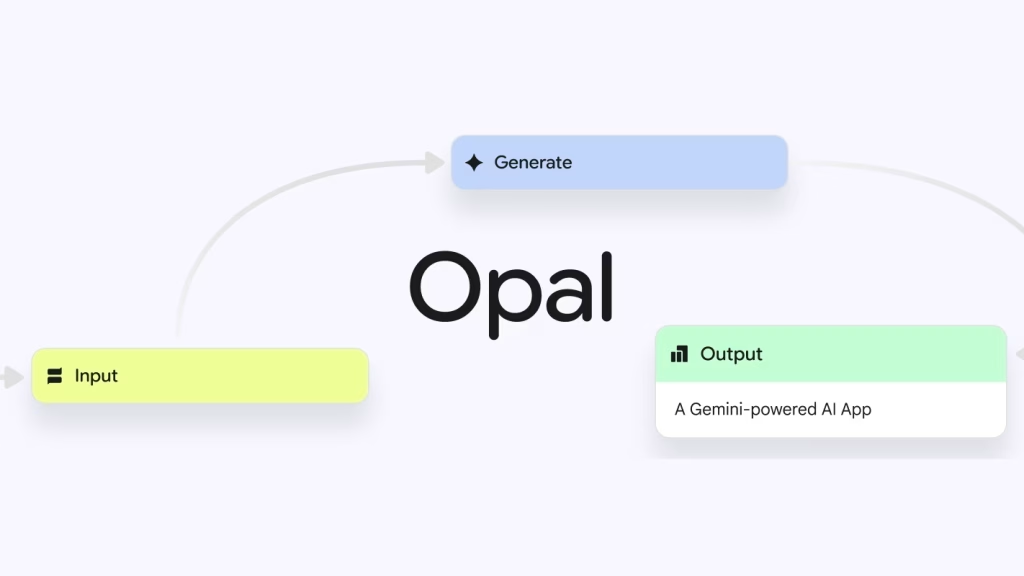Google's AI App Builder, Opal, Expands to 15 New Countries, Democratizing Creation
Google has significantly broadened the reach of its experimental AI-powered app development tool, Opal, making it available in 15 additional countries. This move, announced on October 7, 2025, marks a substantial step in Google's mission to democratize app creation, allowing users to build mini web applications using simple text prompts, a process playfully termed "vibe-coding." The expansion now brings this innovative tool to markets across North America, Asia-Pacific, Latin America, and South Asia, signaling a global push to empower a wider range of creators.
The newly supported countries include Canada, India, Japan, South Korea, Vietnam, Indonesia, Brazil, Singapore, Colombia, El Salvador, Costa Rica, Panamá, Honduras, Argentina, and Pakistan. This strategic rollout aims to tap into burgeoning tech scenes and diverse user bases, offering a no-code solution for rapid prototyping and idea realization. Opal's core functionality allows individuals without traditional coding backgrounds to translate their ideas into functional web apps simply by describing what they want.
Unpacking Opal: The "Vibe-Coding" Revolution
At its heart, Opal is designed to be an intuitive AI assistant for app development. Unlike complex coding environments, Opal leverages advanced natural language processing to interpret user descriptions and generate functional mini web applications. Imagine needing a quick tool to organize study notes or a simple interactive quiz for a class project; with Opal, you could simply type out your requirements, and the AI would construct the basic framework. This approach is particularly impactful in today's fast-paced digital landscape, where the ability to quickly iterate and test ideas is crucial.
Initially launched as an experimental tool in the U.S. via Google Labs in July 2025, Opal quickly garnered attention for its accessibility. Early feedback highlighted its versatility, with users creating everything from educational aids and content generators to basic business dashboards. TechCrunch's initial coverage noted Opal's focus on "mini-apps"—quick to build and share—as a key differentiator, positioning it as a tool for immediate creative output rather than large-scale enterprise solutions. This expansion means that this accessible form of AI-driven development is no longer confined to a single market.
A Global Footprint: Strategic Market Expansion
The selection of these 15 countries for Opal's expanded availability isn't arbitrary. It reflects a strategic effort to reach regions with high potential for innovation and digital growth.
- North America: Canada joins the U.S. in accessing this new wave of AI-powered development.
- Asia-Pacific: India, with its massive tech talent pool and vibrant startup ecosystem, is a prime candidate. Japan and South Korea, known for their advanced technological adoption, will likely see rapid integration. Vietnam, Indonesia, and Singapore represent dynamic markets with growing digital economies.
- Latin America: Brazil, a major economic hub, along with Colombia, El Salvador, Costa Rica, Panamá, Honduras, and Argentina, are poised to benefit from tools that lower the barrier to digital creation.
- South Asia: Pakistan's inclusion taps into a significant and growing digital user base.
This broad geographical reach aligns with the projected growth of the no-code/low-code market, which Statista forecasts to reach $187 billion by 2030, with the Asia-Pacific region leading the charge. By making Opal available in these diverse markets, Google is positioning itself to be a key player in democratizing technology creation, especially in areas where traditional coding education might not keep pace with digital demand.
Enhanced Capabilities and User Experience
Beyond just geographical expansion, Google has also rolled out several enhancements to Opal alongside this launch, aiming to make the "vibe-coding" experience even smoother and more powerful. These updates address user feedback and aim to broaden the tool's utility.
- Iterative Prompting: Users can now refine their app ideas in real-time. For instance, after creating a basic quiz, one could add a prompt like, "Now, include a scoring system and add a timer." This multi-step interaction allows for more complex app development without starting from scratch.
- Streamlined Sharing: The ability to easily share created mini-apps, whether through direct links or QR codes, is a significant boon for collaboration and dissemination. This is particularly useful for educators sharing learning tools or small businesses showcasing simple product demos.
- AI-Assisted Suggestions: Opal now offers AI-powered suggestions for app templates based on the user's described "vibe" or intended use case, streamlining the initial setup process for common applications like productivity tools or social media content creators.
These improvements, reportedly boosting app generation speed by up to 30% according to internal Google metrics, aim to make Opal more robust. The integration of basic data handling, such as connecting to Google Sheets, also signifies a move beyond pure prototyping towards more functional mini-applications.
Community Reactions and Future Implications
The tech community has reacted with a mix of excitement and keen observation. Social media platforms are already abuzz with early prototypes created by users in the newly supported regions—from a recipe generator in Brazil to a language learning app in Indonesia. The sentiment appears overwhelmingly positive, with many hailing Opal as a revolutionary tool for aspiring creators.
However, as with any experimental technology, there are considerations. Some early users have noted occasional issues with non-English prompts or the inherent limitations of an experimental platform, particularly concerning enterprise-grade security. Privacy advocates also remind users to be mindful of data usage policies, as prompts may contribute to training future AI models.
Despite these points, the overarching impact of Opal's expansion is undeniable. It has the potential to significantly lower the barrier to entry for digital innovation, particularly in regions where resources for traditional software development are scarce. This could foster a new wave of localized applications and digital solutions, tailored to specific community needs. Furthermore, it intensifies the competitive landscape for AI-driven development tools, pushing companies like Microsoft and OpenAI to innovate further.
Google's continued investment in tools like Opal underscores a broader vision of democratizing technology and empowering individuals to create. As the AI app revolution gains momentum, Opal's expanded global presence is a clear indicator of where the future of accessible development might be heading.
